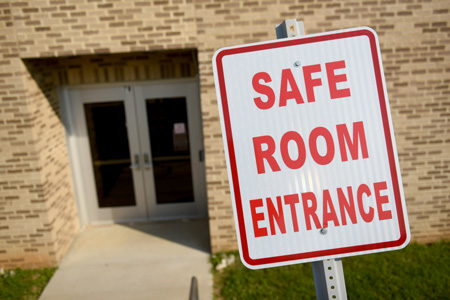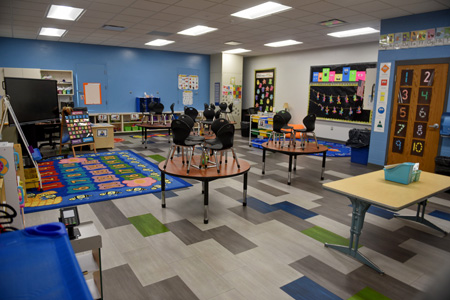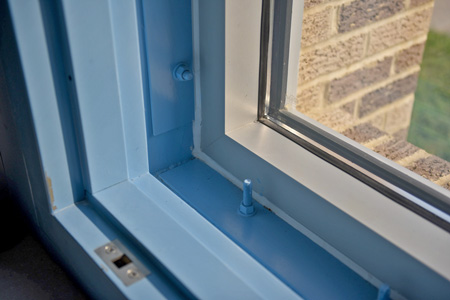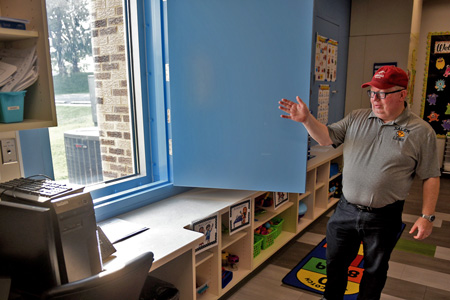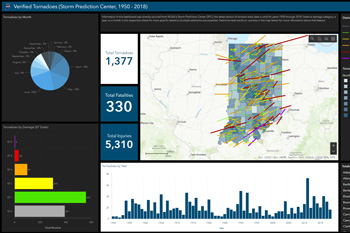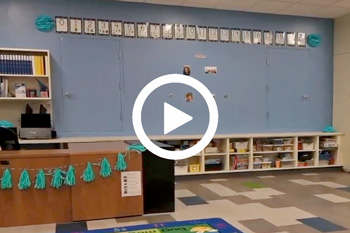About the IDHS Community Safe Room Program
The Indiana Department of Homeland Security (IDHS) Community Safe Room Program works with local entities with roles in public safety to collaborate on safe room grants through FEMA's Building Resilient Infrastructure and Communities (BRIC) program. These grants partially reimburse the applicant for the construction of community safe rooms, or safe rooms designed to shelter a large number of people. As of November 2020, FEMA had provided about $1.2 billion in FEMA funds toward the design and construction of more than 40,000 residential and nearly 2,200 community safe rooms in 25 states and territories.
Interested schools, municipalities, hospitals and others responsible for public safety should reach out to IDHS at mitigation@dhs.in.gov.
Note: If considering building a safe room or hiring a company to construct one, keep in mind that neither IDHS nor FEMA certifies or recommends specific contractors or products. Companies and people stating that they or their products are certified or approved by IDHS or FEMA are sharing false information.
Interested in Residential Safe Rooms?
School Safe Room
Program Details
Want to stay updated on Mitigation programs like community safe rooms? Sign up to receive emails when Mitigation updates are available.
- About Safe Rooms
Safe Rooms Save Lives
In an average year, 800 tornadoes are reported nationwide, resulting in 80 deaths and more than 1,500 injuries. A safe room, which is a hardened structure specifically designed to meet FEMA criteria and provide "near-absolute protection" in extreme weather events, can survive winds as high as 250 miles per hour. It can be an interior room, space within a building or an entirely separate structure designed to protect occupants for events that normally last approximately two hours.
Community safe rooms can be designed for multiple uses. For example, community centers, gymnasiums or cafeterias can be constructed to community safe room standards.
For the purposes of this program, the term "safe room" includes any above- or below-ground shelter that meets or exceeds guidelines stated in the most recent version of FEMA 361 (Safe Rooms for Tornadoes and Hurricanes: Guidance for Community and Residential Safe Rooms). The criteria presented in the publication addresses how to design and construct safe rooms that provide near-absolute protection from wind and windborne debris for occupants. If the safe room is being constructed with FEMA grant funds, the FEMA Funding Criteria in Part B of the publication is required.
For more information about safe rooms or to download a copy of FEMA 361, which contains recommended construction plans for safe rooms, visit the FEMA website.
- Building Safe Rooms
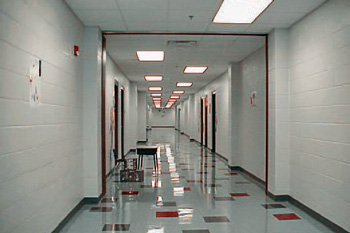
Safe area school hallway
Safe area school hallwayIf considering building your own safe room or hiring a company to construct one for you, keep in mind that neither IDHS nor FEMA certifies or recommends specific contractors or products. Companies and people stating that they or their products are certified or approved by IDHS or FEMA are sharing false information.
The door assemblies for community safe rooms are especially important because they may be used frequently. View FEMA's guidance on installation and maintenance of community safe room doors to learn more.
FEMA does not fund community safe rooms that are constructed in areas where flooding may occur. Be sure to select a location for a community safe room where the risk of flooding is low. Read the quick guide by FEMA on flood hazard elevation and site selection criteria for community safe rooms.
Existing buildings that are not designed to serve as safe rooms can still provide a level of protection. The areas inside the building are considered "the best available refuge areas," and FEMA has guidance for building owners or administrators to consider how to optimize occupant safety in these types of situations. Read FEMA's Tornado Protection: Selecting Refuge Areas in Buildings document for helpful criteria, such as reinforced concrete walls and short roof spans, and for three case studies of school buildings that were hit by tornadoes.
Questions To Think About
- What local permits, if any, need to be obtained before construction?
- What local zoning or building restrictions may apply to the location of the safe room?
- Are there any utility easements that could affect the safe room’s placement?
- Does the property have a high water table that could cause some types of safe rooms to flood?
- Would the location of an underground safe room affect septic systems or leach lines?
- Would the form and location of the safe room be accessible to someone with a disability or access/functional needs?
- Will the depth of bedrock at the location prevent installing some types of safe rooms?
- FAQs and Examples
Frequently Asked Questions
- What is the minimum square footage per person for community safe rooms?
- Standing or Seated: 5 square feet
- Wheelchair-bound: 10 square feet
- Bedridden: 30 square feet
The number of spaces for standing or seated, wheelchair-bound, or bedridden people should be determined based on the expected occupancy of the safe room as calculated by the designer and the applicable authority having jurisdiction. As a minimum, each community safe room should be sized to accommodate at least one wheelchair space for every 200 occupants.
- What is the cost of installing a safe room in a small business?
Costs vary across the country, but in general safe rooms installed in existing structures are more expensive than those installed during new construction. Costs depend on many factors, such as size, materials, location, prefabricated or built on-site, door type and additional amenities.
- Is an in-ground safe room safer than one above ground?
In-ground safe rooms provide inherent protection from windborne debris. Above-ground safe rooms are required to be tested to ensure they can also provide protection from windborne debris, so all properly constructed safe rooms offer life-safety protection if properly designed and constructed.
- Are there any flood hazard restrictions for locations of community safe rooms?
Yes, community safe rooms should be located outside flood hazard areas subject to high-velocity wave action and coastal areas, as well as floodways. Exceptions can be made. Find more information in FEMA's elevation and siting fact sheet and FEMA 361.
 Visit FEMA's Safe Room FAQs page for more answers to frequently asked questions.
Visit FEMA's Safe Room FAQs page for more answers to frequently asked questions.Community Safe Room Project Examples
- What is the minimum square footage per person for community safe rooms?
Resources
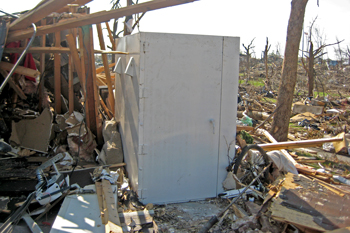
Above-ground safe room after 2011 Joplin, Missouri, tornado

Above-ground safe room after 2011 Joplin, Missouri, tornado
- Get Prepared: Tornadoes
IDHS - National Risk Index Map
FEMA - Tornado damage according to EF scale
NOAA - Violent tornadoes in Indiana
National Weather Service - Wind zones in the United States
FEMA

